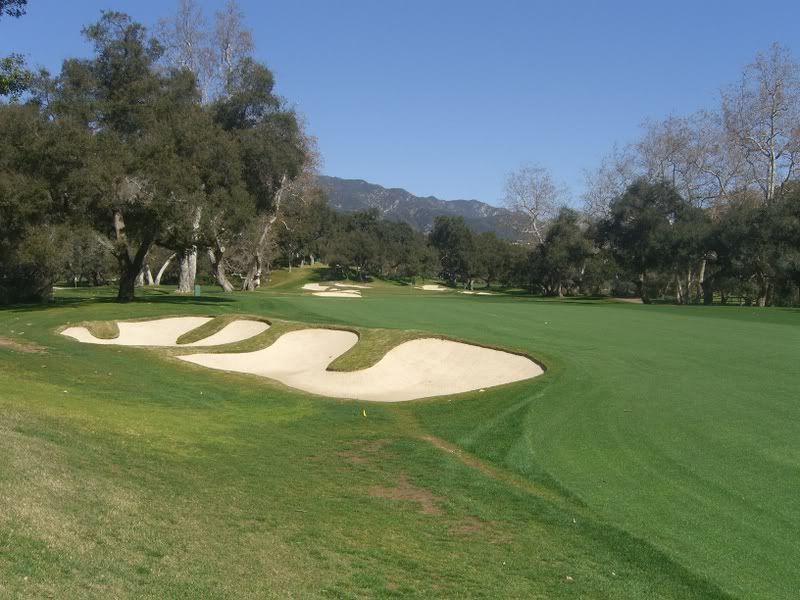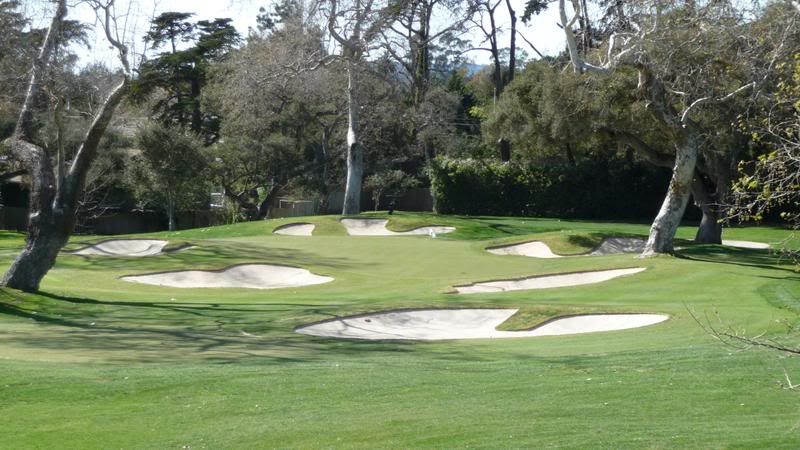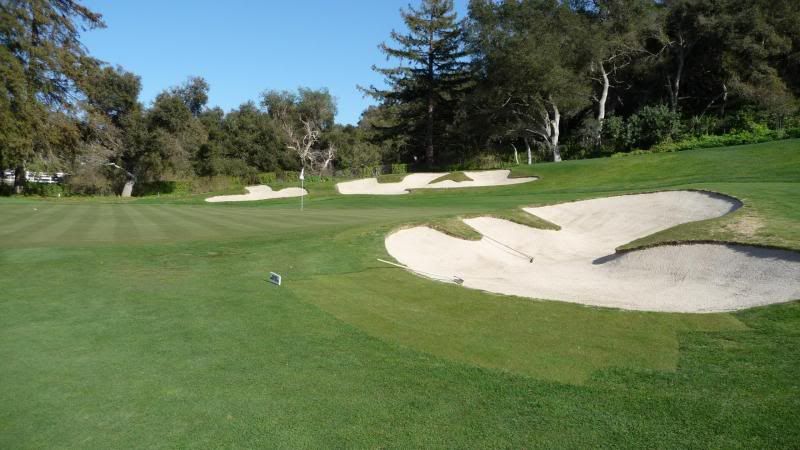In a recent review of Flossmoor Country Club in Chicago’s south suburbs:
http://golfclubatlas.com/forum/index.php/topic,41166.0/I noted that one of the most notable features of the renovation work there by architect Raymond Hearn is the bunker work on the course. Virtually every bunker on the course was redone, with Hearn adopting a style of bunkering often associated with Golden Age architects George Thomas and Alister Mackenzie.
The bunkers have distinctive edging -- what others have described as lacey-edged. It was a marked departure from what had been there before, in which the bunkers at Flossmoor had – with a few major exceptions – a more even, curvilinear edging.
Hearn, in explaining the bunker work at Flossmoor, said architect H.J. Tweedie was best known for his routing and green complexes, but not his bunker design. In an email, Hearn explained his decision to use the new bunkering style at Flossmoor:
“…(T)his style is somewhat limited in the Great Lakes region. This selection was a bold move, but I have never had second thoughts about this selection for Flossmoor. In my opinion, a Thomas-style bunker is a ‘throw-back’ to (the) Golden Age of golf course design and evokes a classical look and feel. In terms of bunker styles, I highly favor the Thomas style. I think Thomas and his bunkers were brilliant. Visually these bunkers upgraded the aesthetics of the course significantly while adding great emphasis and definition.”
In general Flossmoor’s bunkers are not that deep. Fairway bunkers are level with the fairway, with no really big lips to get over, and greenside bunkers are not generally dug in, in the manner of a Banks or Langford greenside bunker. Part of the reason for that, it seems, is that Tweedie placed many of his greens as simple extensions of the fairway. It’s notable that the deepest greenside bunkers at Flossmoor are at the7th hole, a par 3 with a crowned green added to the routing in 1915 by Harry Collis, the Chicago-based architect.
Given the dramatic change in bunkering style at Flossmoor, I thought it might be a worthwhile exercise to compare the course’s bunkering to some other classic-era courses I’ve visited recently. Comments, observations, and opinions welcome, of course.
Here are some looks at a few Flossmoor bunkers:
A long fairway bunker on the par 5 1st hole.

A greenside bunker at the par 3 2nd.

Another greenside bunker, this on the par 4 5th hole.

Fairway bunkers lining the left side of the par 4 8th fairway.

Here are some bunkers from Beverly CC, just up the road in Chicago, a Donald Ross course (Ron Prichard recent renovation work). Beverly’s fairway bunkers tend to have high lips; notice how these bunkers hide portions of the fairway and green. These are on the par 4 8th:

Two examples of greenside bunkering at Beverly – the first from the short par 4 1st, and the second from the long par 5 11th. In stark contrast to several greens at Flossmoor, Ross placed nearly all of his greens at Beverly above the fairway, with bunkers dug into the sides. The player who finds himself bunkered greenside at Beverly often has to make a concerted effort to get out them, as the ball will be several feet below the green surface in most cases.


Two shots of the bunkering at the par 3 16th at Olympia Fields (North), which hosted the 2003 U.S. Open (Willie Park, Jr., with recent renovation work by Mark Mungean), which I’d describe as a muscular look to the bunkering:


The trademark Charles Alison bunkering at Milwaukee CC, with its sharp edging and “flashed-up” look; here are a series of bunkers between the 5th and 6th holes, both par 4s.

The very deep bunkering at the short par 3 8th; you can stand in the bottom of these bunkers and not see all of the green.

The incredibly sharp edging of Milwaukee’s bunkering; this greenside bunker is on the par 4 13th.

The Langford-Moreau bunkering at Lawsonia Links (photos courtesy of Dan Moore’s Lawsonia thread):
Bunker at the corner of the dogleg of the par 4 3rd hole:

Bunkering on the par 5 11th:
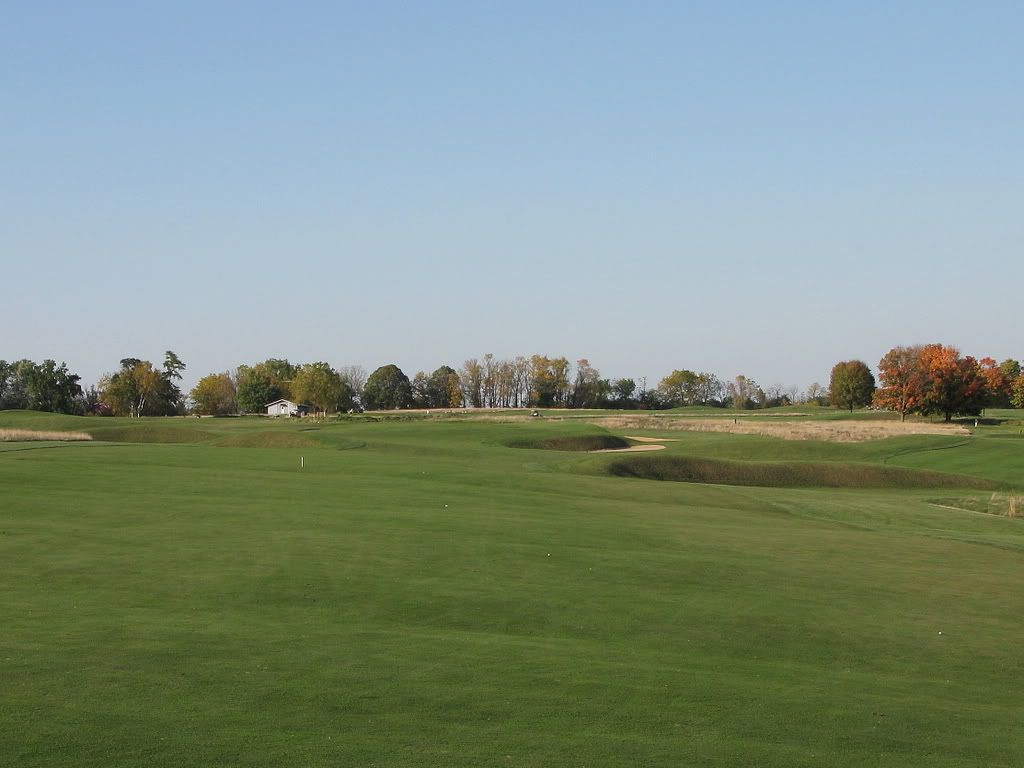
The notable en echelon bunkering on the par 5 13th:

Finally, for some comparison, here are some bunkers from Thomas- and Mackenzie–designed courses culled from GCA threads. (As several GCA posters have noted, along with historians such as Daniel Wexler, Thomas associate Billy Bell played a significant role in influencing and even shaping the design of bunkers at some of Thomas’ best-known works.)
LA North Par 3 16th (Jon Spaulding photo)
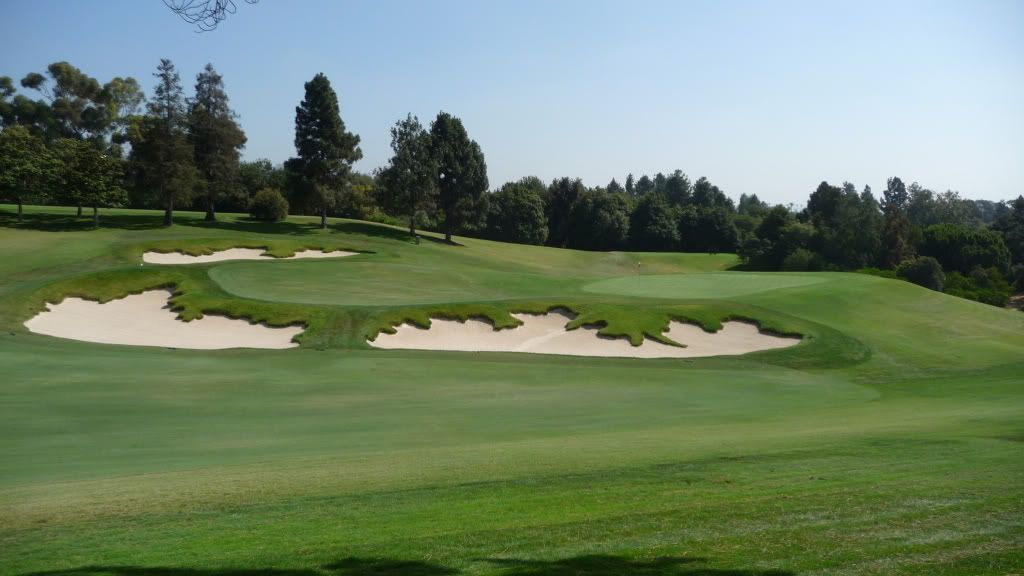
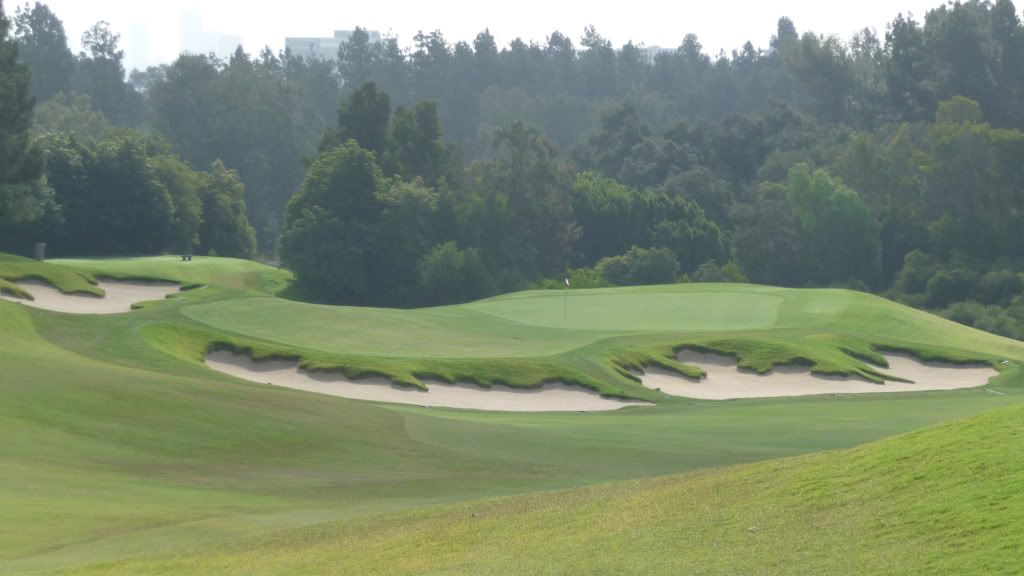
Two views of fronting bunker at Bel Air’s 18th; from a 2008 thread by Robert Ball who suggests it’s the closest Thomas-Bell bunker left on this course:
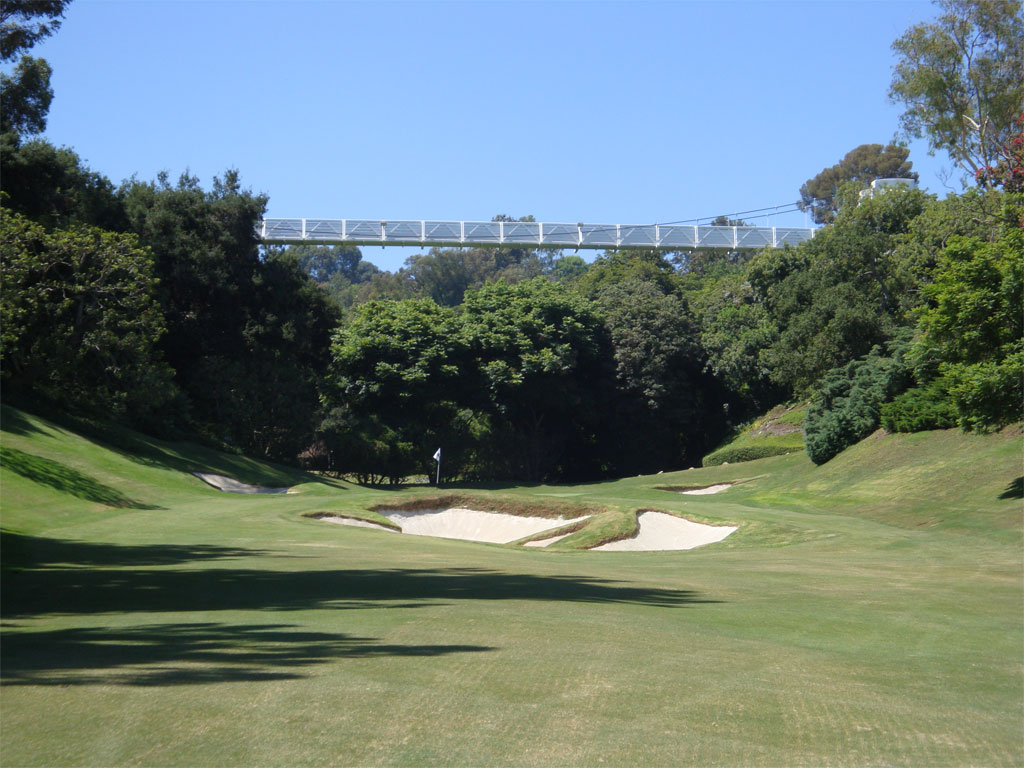
18 green from the swinging bridge:
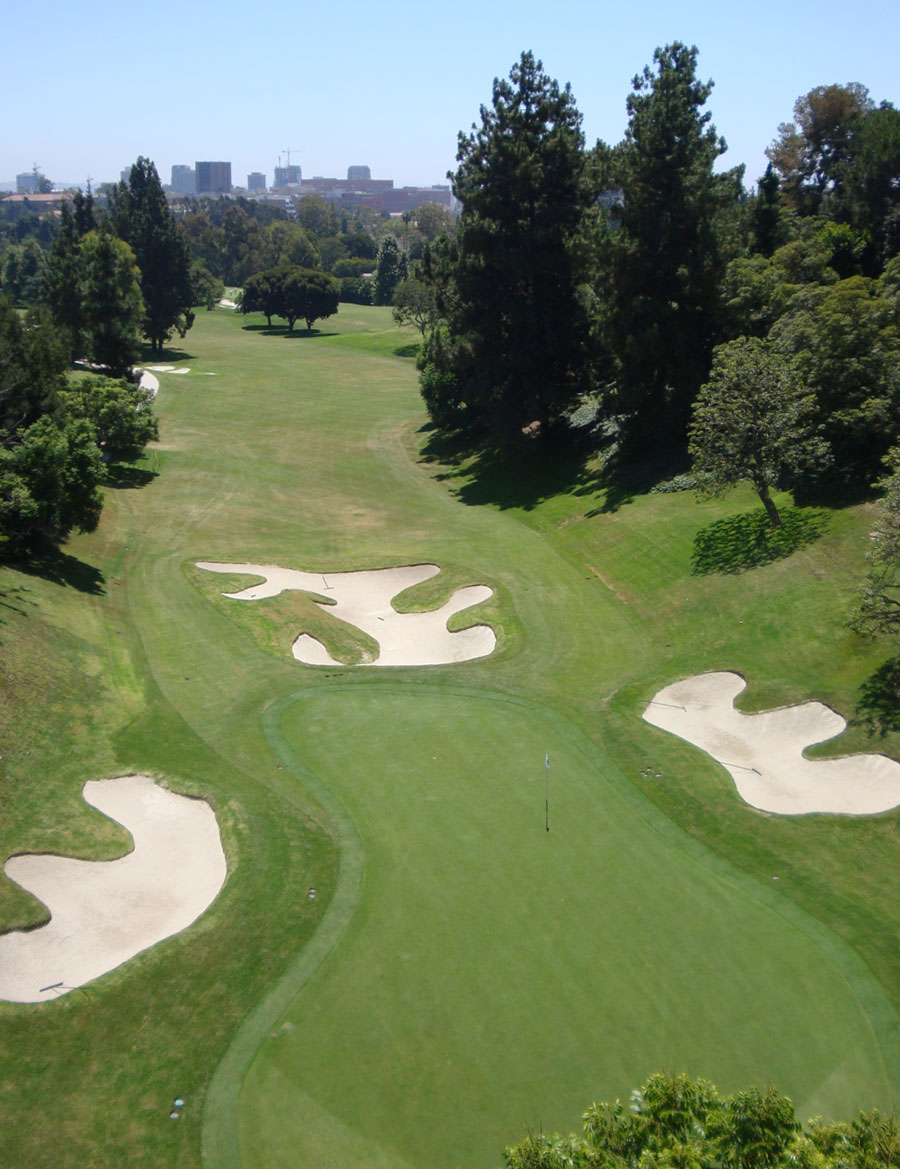
Early photos of Riveria, from a David Stamm thread:
6th hole:
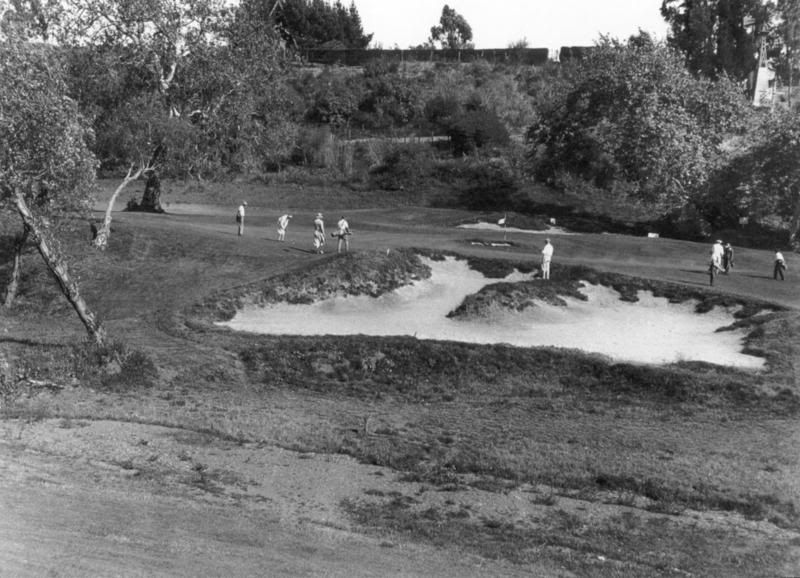
11th hole:
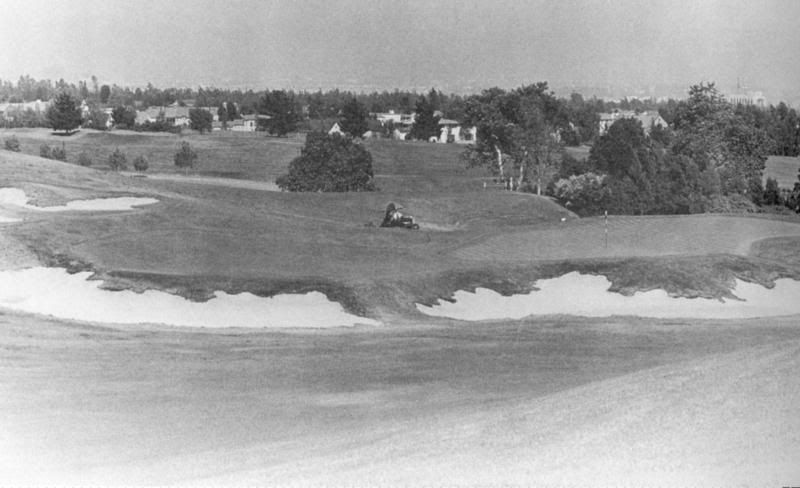
The Valley Club of Montecito (Mackenzie), from another David Stamm thread:
